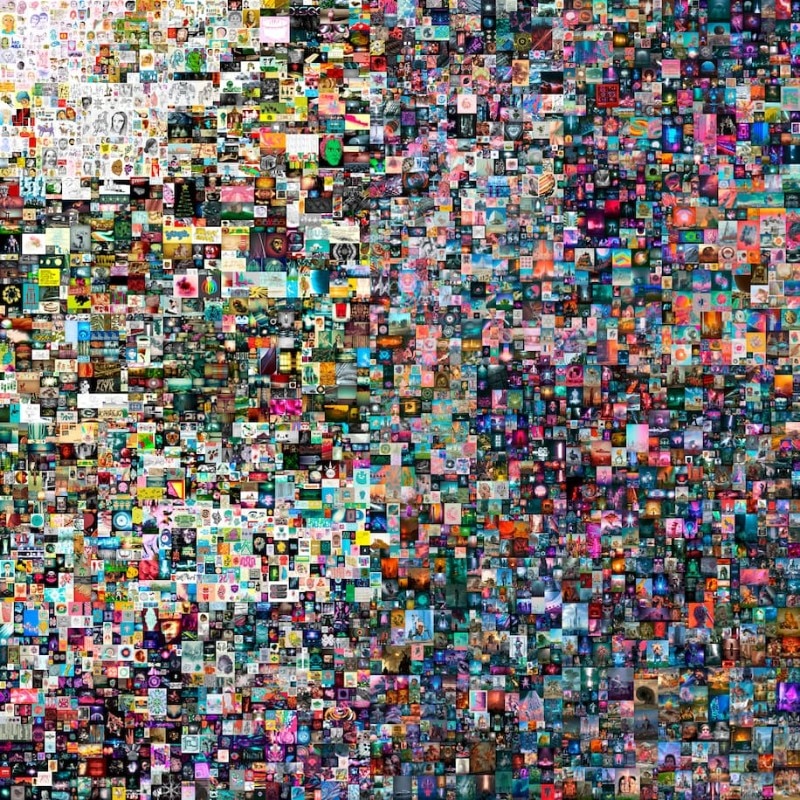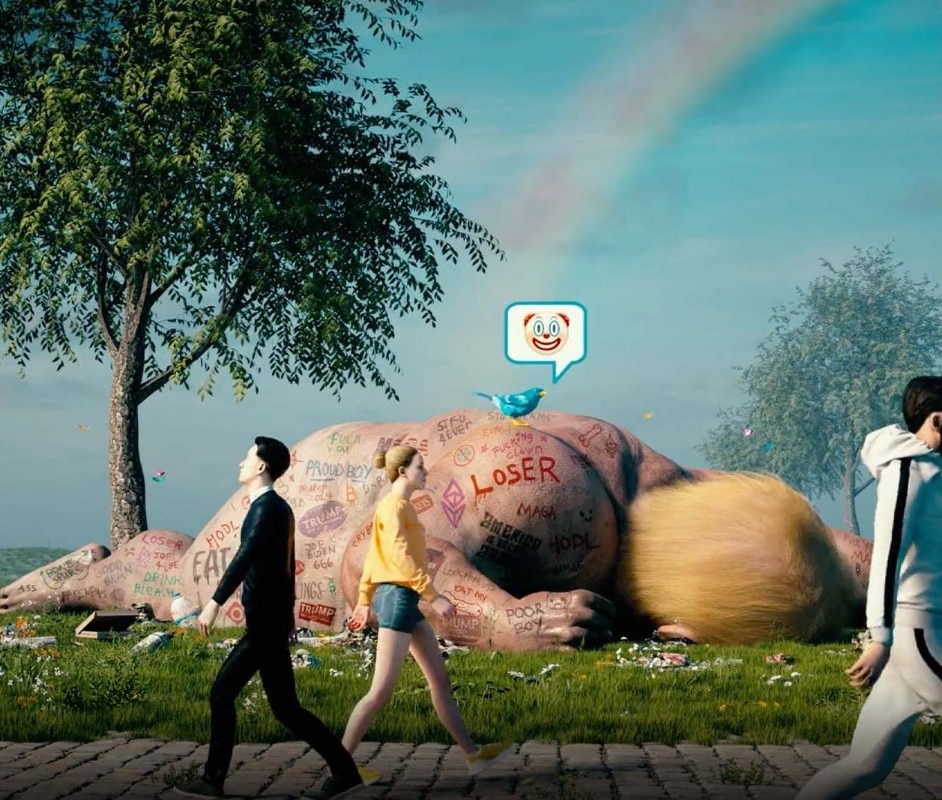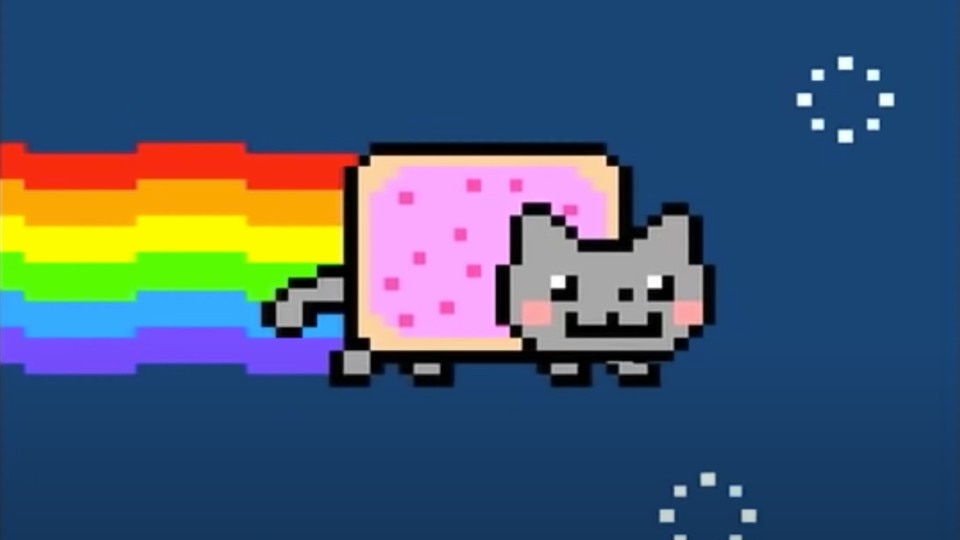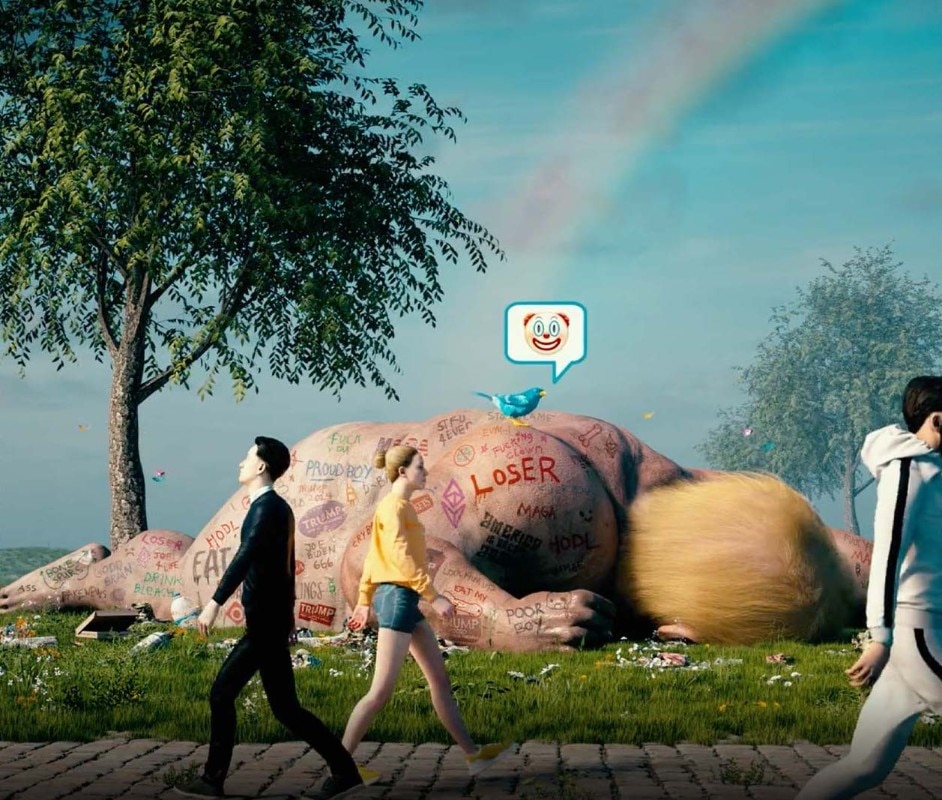If you follow the digital art world at large, or even if you just follow mainstream news, you've probably heard of NFTs or Non-Fungible Tokens. What are they, and why are they suddenly all over the place? We've tried to answer this and many other questions to help you make sense of a complex and multifaceted phenomenon that will most probably stay relevant in the art world for a long time, even after the current hype cycle will inevitably die off.
What are NFTs?
NFT is an acronym for Non-Fungible Token. Non-fungible is a fancy way to say the token is unique and can't be exchanged with another token of equivalent value. A ten Euro bill is a fungible token: it's an object that carries a specific value but is not unique. Millions of other 10€ bills can be exchanged with the one you own–seamlessly. A physical non-fungible token would be a work of art, such as a painting, with a determined value or a valuable item from a collection, like a rare stamp or a baseball card. NFTs are basically the same thing as these last examples, translated into the digital world.

Yes, but then what ARE they, exactly?
Ethereum is a popular blockchain that supports both a cryptocurrency called Ether and so-called "smart contracts", a special kind of dynamic digital contracts that can change their conditions automatically based on a set of predetermined variables. That's what NFTs actually are.
In short, they're a form of blockchain-based smart contracts programmed to define and ensure that a given piece of digital content (be it an image, a movie, or a string of text) is unique and owned by a single person at any given time. They are transferrable but can't be duplicated or reproduced.
What's their connection to the world of art?
Many people currently think that this is a great way to determine ownership of digital works of art. NFTs appear to be the best way to ensure that a single jpeg file, a blob of text, or a video are owned and controlled by a single collector. It's an enticing perspective, but a complex one moving from a paradigm shift (abstract digital objects to be considered on par with the possession of a physical one-of-a-kind object) that we are probably not ready to fully accept just yet.
Philosophical considerations aside, right now NFTs look more like digital certificates of ownership which, unlike the physical equivalent, can be inextricably tied to the work of art itself.

Why are they suddenly relevant?
Because they've become mainstream with the sale of a collage of pictures by digital artist Beeple at Christie's for 69 million dollars. The image puts together 5000 single frames of the work the artist has produced every day over the course of 5000 days.
Like any other cultural phenomenon, though, NFTs didn't happen overnight. It all started back in 2017 with KriptoKitties, a set of digital tradable cards built as the first experiment with smart collectables programmed on Ethereum.
Recently, more and more digital artists "mint" their own work as NFTs, sometimes as unique pieces, sometimes as a limited batch of the same jpeg or video. What is enticing for artists is the ability to program the smart contract to continually give them a cut of the transaction cost when the work is resold. This is seen as a huge plus, compared to what happens in the physical art world, where original artists often don't see a dime when their works are auctioned off at stellar prices by dealers.
Do NFTs solve the problem of the unlimited reproduction of digital art?
Well, not at all, but that's also not the point. Anyone can still download, copy, reproduce, share, and modify any jpeg of a Beeple artwork or any other NFT. Only one single person at a time can claim to actually possess it. It's a bit like owning a Picasso instead of a print of that Picasso, with the difference that a print is clearly and immediately recognizable as a different object.
A reproduction of a Beeple video is the exact physical clone of that work (each bit is the same as the original). Still, its NFT exists only once on the blockchain, thus enforcing a sort of artificial ontological distinction between the original and its clones.
Ok, but the pictures or the movies are still indistinguishable, so what's the point?
Though NFTs, collectors can support artists they love in a pretty straightforward way. In fact, a lot of high-stakes transactions right now are tied to crypto billionaires who've found a fun way to redistribute a small fraction of their digital wealth to artists and creators. Other people think that, regardless of the ability to reproduce a digital work of art or not, NFTs themselves will gain value in the future, a bit like physical works of art. Are they right? Are they wrong? To be honest, it's way too early to make any definitive stance on this.

Ok, so, is this a bubble or is this the future of art?
Porque no los dos? The current NFT frenzy definitely has all the features of a modern-day Tulip fever. I mean, nobody can seriously think that a collage of jpegs like Beeple's - albeit artistically relevant - is worth more than, say, Monet's Nympheas. Yet, Christie's sold it for 15 million dollars more than what the Monet painting sold for, a few years ago. If that's not a bubble, I wouldn't know any other term to define what's going down right now.
Nonetheless, NFTs hold a lot of unexplored potential for artists and for the art world. Current evaluations are skewed both by hype and the fact that many bored crypto-millionaires are treating them as their new favourite playground. Considering that the art market is basically a playground for traditional millionaires, then maybe yes, NFTs are a perfect candidate to become the future of art trading.
Is it true that NFTs are bad for the environment?
Like the best relationship statuses on Facebook would say: it's complicated. Indeed, NFTs on Ethereum are currently minted through inefficient systems that consume a lot of electricity. It's also true that many artists are aware of this and try to offset their consumption with carbon credits or similar methods. These should all be temporary solutions until Ethereum finally switches to a greener way to ensure that the ledger records (i.e. what proves the integrity of the smart contract, in this case) are accurate. The problem is that, right now, it's not sure that Ethereum will be able to make the switch due to diverging political and strategical views in the community.
Ok, ok, but can I turn an insignificant digital drawing of mine into an NFT and sell it at exorbitant prices?
Sure, you can. But why would you? And who do you think would buy it? Like every work of art, NFTs are not "just an image" or "just a video". Most of the time, they are the output of a larger and more complex conceptual process. Whether that process or output is valuable, interesting, meaningful, or aesthetically pleasing is debatable, like with any other traditional work of visual, multimedia, or performing art. Beeple's pieces might not be as worth as what we commonly think Monet's oeuvres are worth, yet they do move from a shared and meaningful cultural context that ensures artistic value or a digital version of an aura. So, if you're an artist, you have an idea, you developed a conceptual process, and you want to sell the output of that process, sure, go for it. Minting NFTs is kinda easy, but it's also costly (around 80€, but that fluctuates), and it's in no way a guarantee in itself that your work will sell for thousands of Euros.


